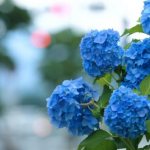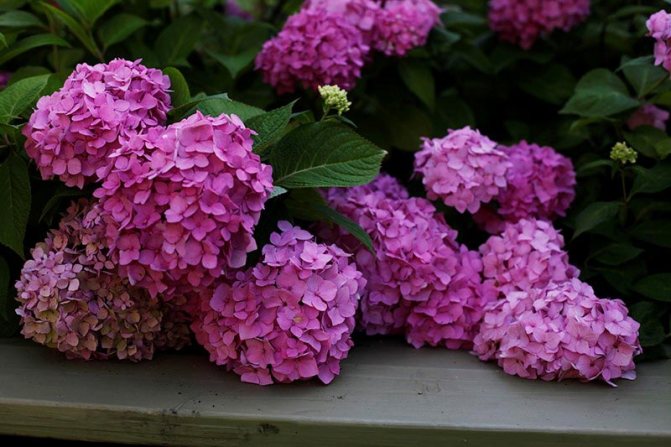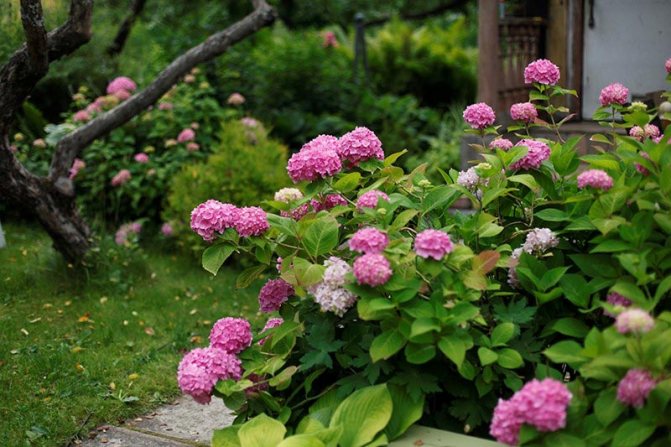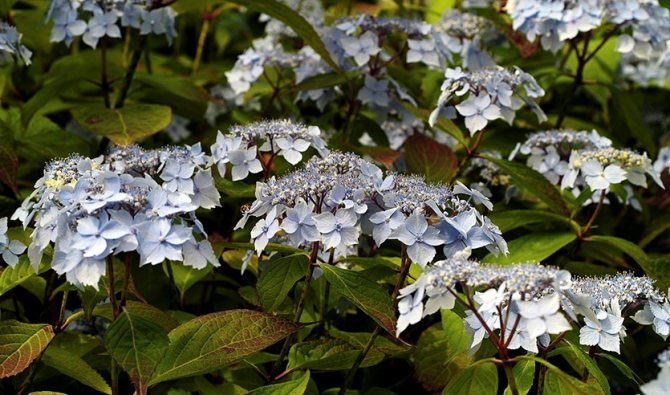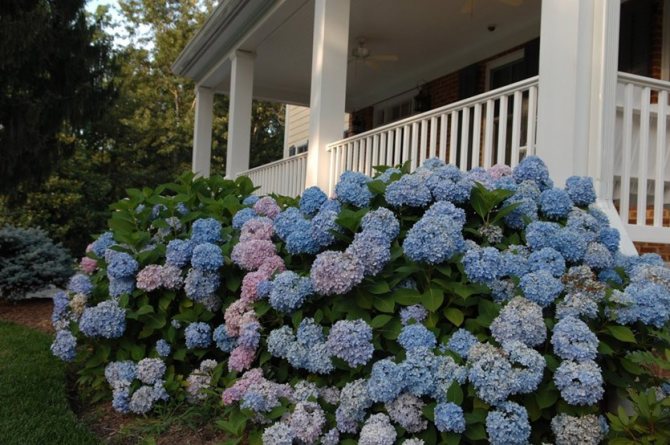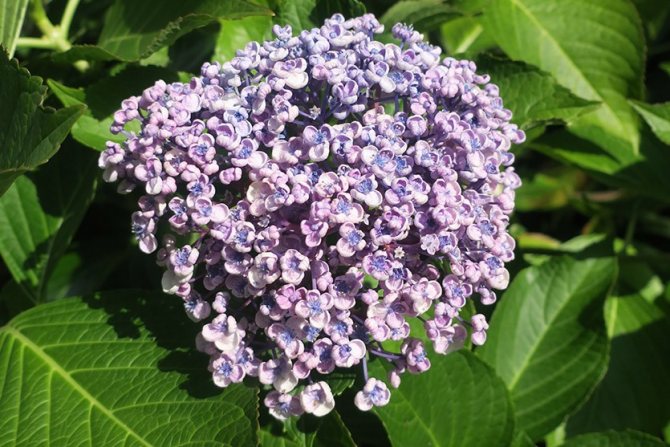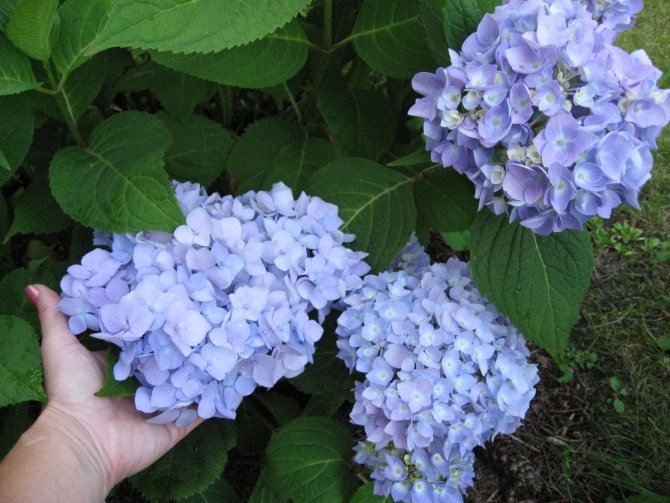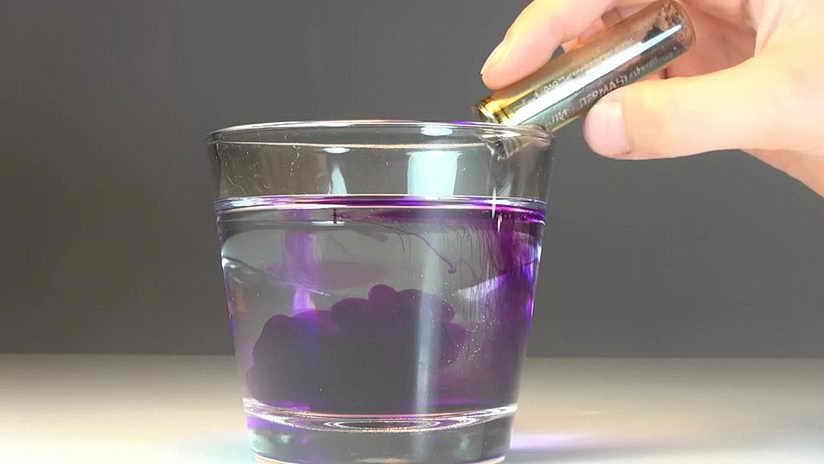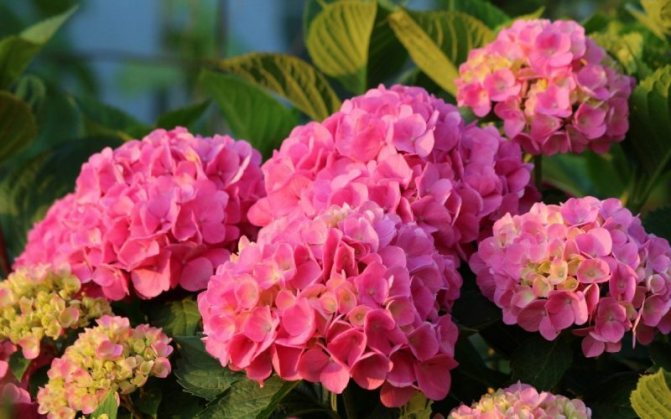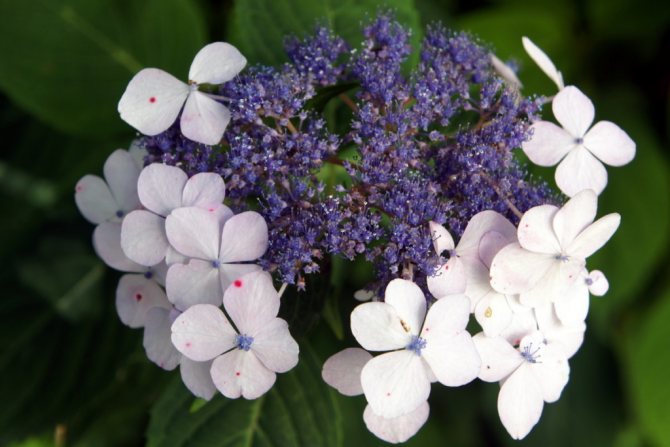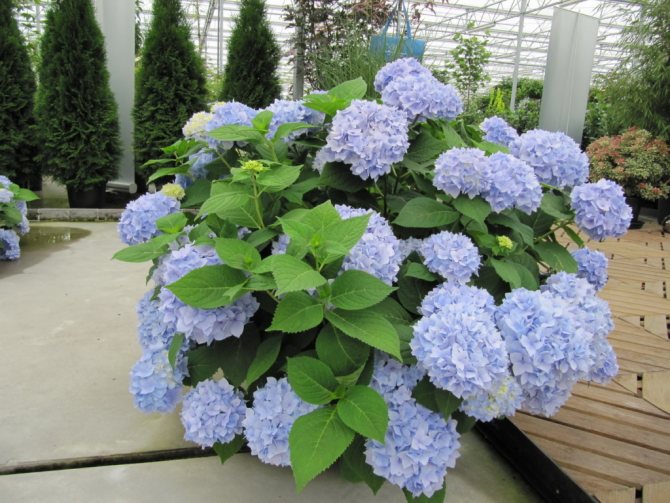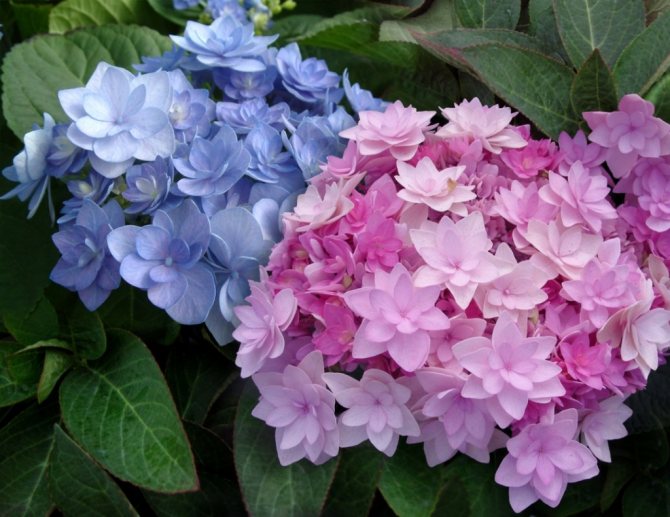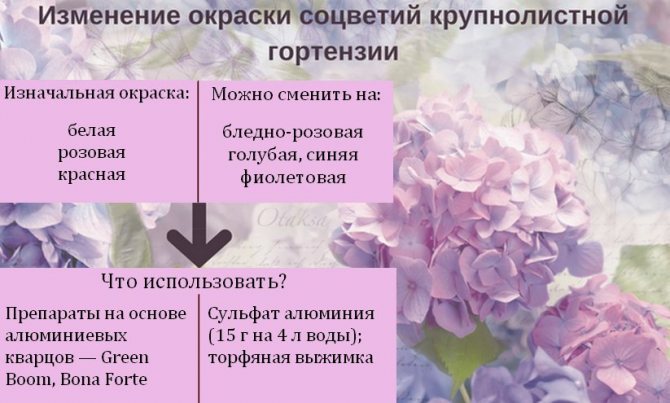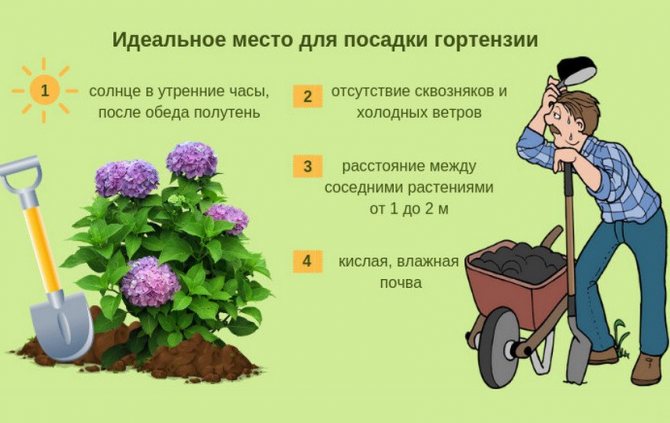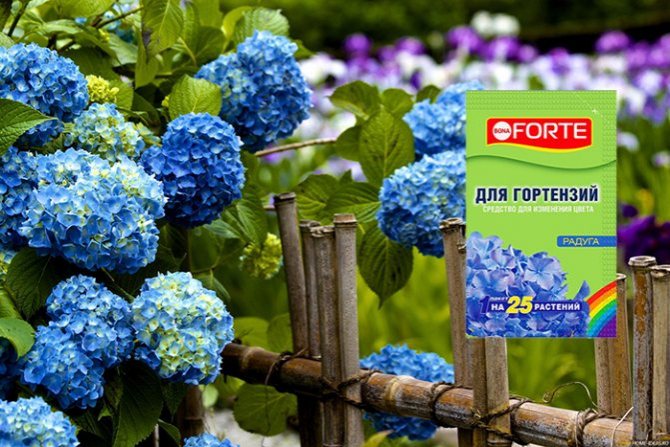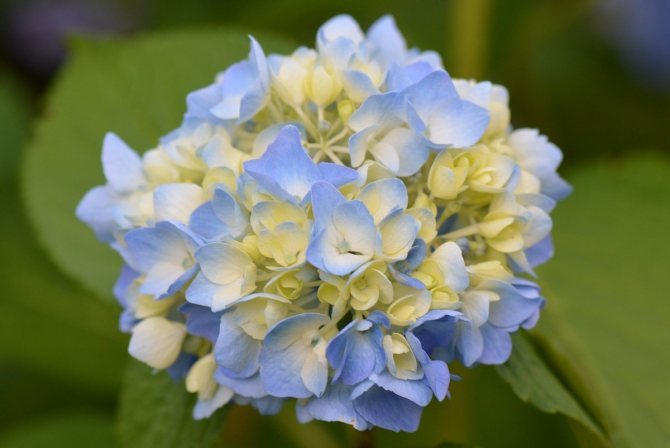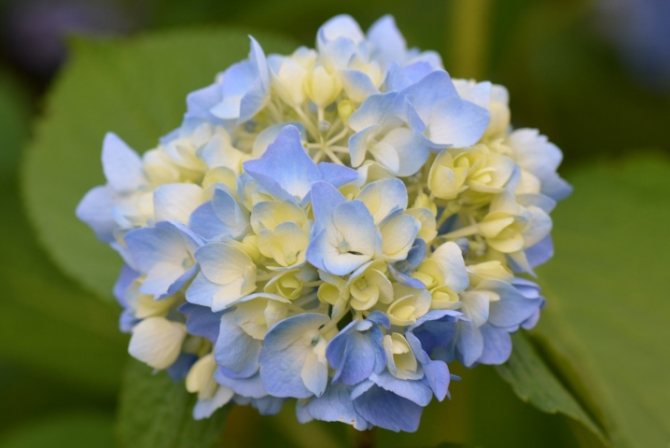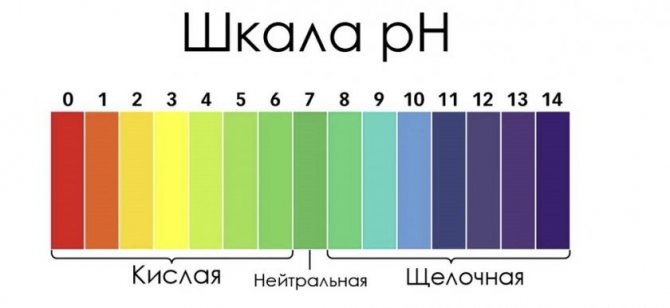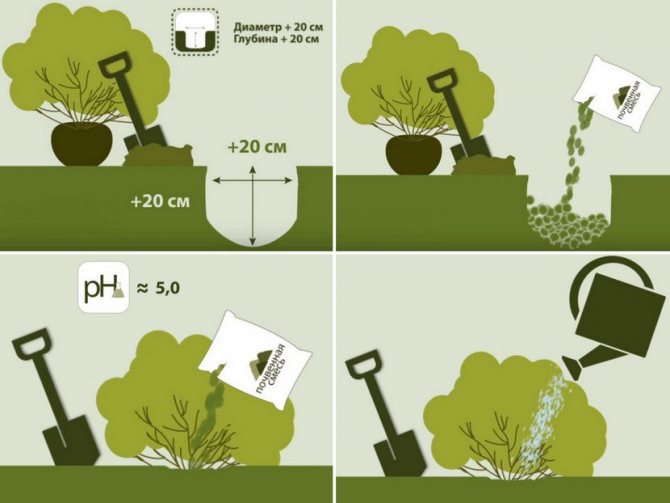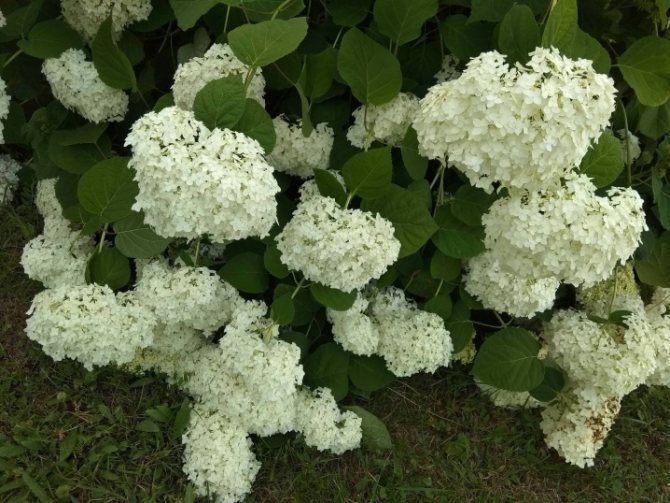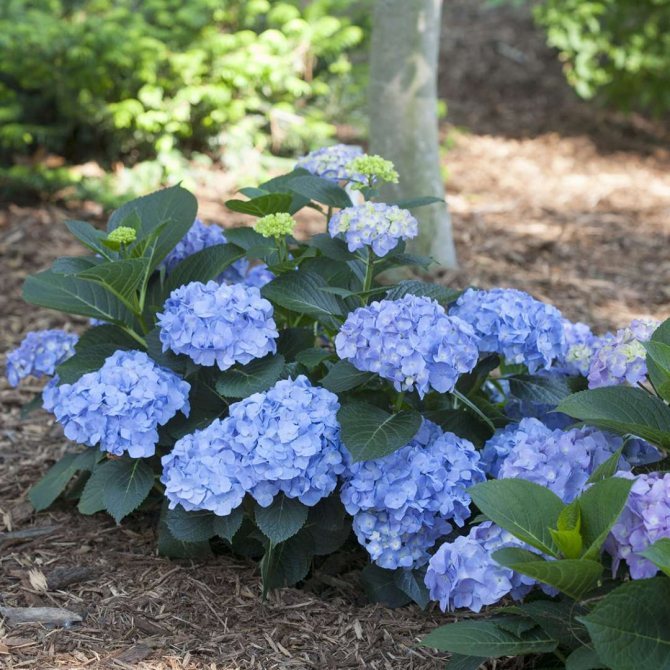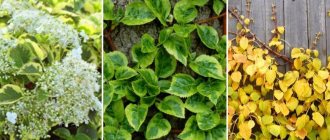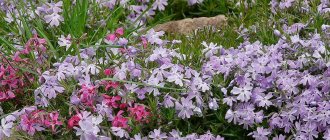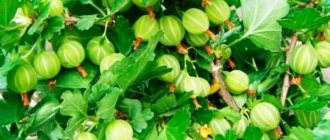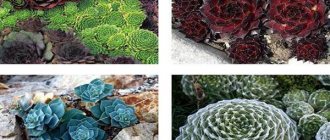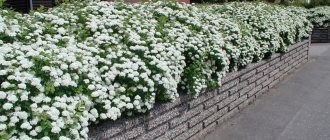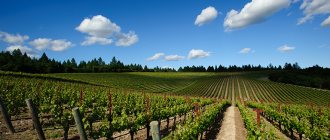Description of blue hydrangea
A plant from the Hortensia family is a large shrub that grows from 1 to 2 m in height. The shoots of the shrub are covered with large bright green heart-shaped leaves, it blooms from early June to autumn in large hemispheres up to 25 cm in diameter.
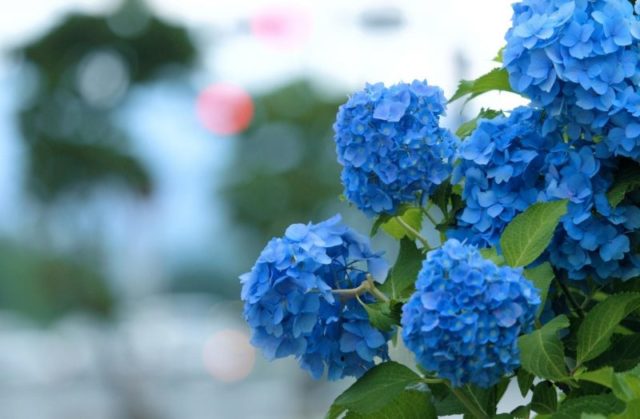
The blue color of hydrangea flowers is given by a high level of soil acidity
Blue hydrangea is not a separate plant species. The color of the flowers depends on the characteristics of the soil, for example, on neutral soil, the shrub gives white or beige flowers, on alkaline soil it brings pink and red inflorescences. The bluish color of the flowers of the shrub is given by soil oxidation - the trunk and shoots of the plant accumulate substances, due to which the flowers become blue or blue.
Attention! Only serrated or large-leaved hydrangeas can bloom with blue flowers. The tree-like species is not capable of producing blue flowers, and climbing blue hydrangeas are also not noted.
Blue hydrangea varieties with photos and names
Since not all hydrangeas are capable of producing blue flowers on acidic soils, it is customary to select individual varieties that change color more easily and most willingly. Several types are popular with gardeners.
Blau Mays
Blue hydrangea can grow up to 1.5 m in height, and spherical inflorescences grow up to 25 cm in diameter. The plant changes the shade of its flowers depending on the soil - from sky blue to purple. Bushes grow quickly, so with the help of hydrangeas, you can transform the garden area in several seasons.
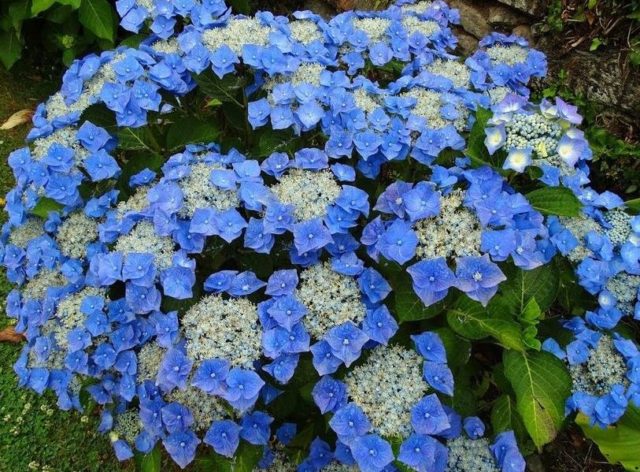

Blau Mays is a fast growing blue variety
Mini Penny
The light-loving plant has good disease resistance and is therefore highly popular. The shrub reaches a height of only about 0.5-1 m, its leaves are green, and the globular inflorescences are blue in sour or pink in alkaline soil. The shrub blooms from July to September, thanks to its compact size, it is actively used in group plantings.
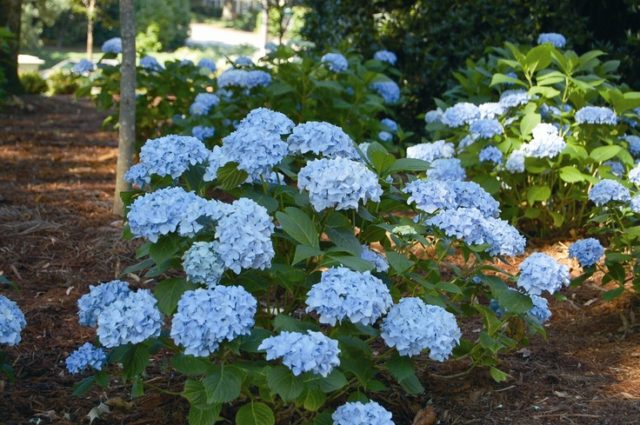

Mini Penny is a compact shrub with globular blue inflorescences
Freedom
A short shrub up to 1.2 m in height prefers to grow on moist soils in shaded areas. Hydrangea has dark green, jagged leaves along the edge, brings inflorescences up to 15 cm in diameter. At the beginning of flowering, the color of the plant is white-pinkish, but on acidic soil it gradually turns blue. At the same time, some flowers can remain pink, which makes the shrub even more interesting.
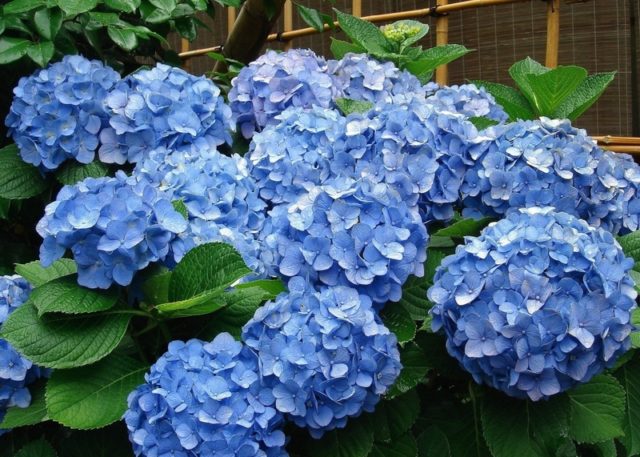

Freedom is a tall variety with dark green foliage and blue buds
Popcorn Blue
Hydrangea Popcorn produces large popcorn-shaped buds that are bright blue or purple in color. The shrub grows up to 1 m in height, the budding period lasts from July to September. Blue popcorn prefers to grow in lighted areas, tolerates winter frosts well, even without shelter.
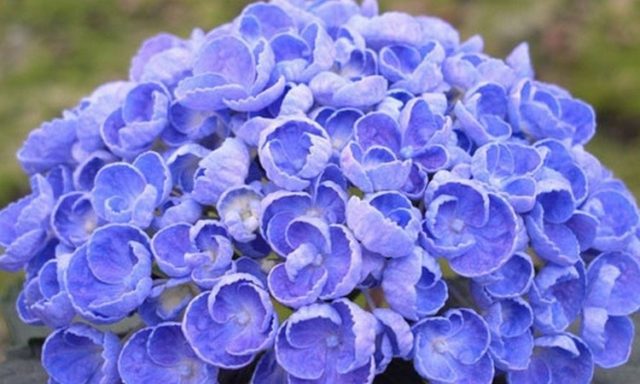

Popcorn Blue - blue variety with unusual flowers
Ramars
This plant variety can produce blue-white or blue flowers, or purple and purple inflorescences, depending on the soil. The height of the bush usually does not exceed 0.8 m, Ramars prefers to grow in the shade and on well-moistened soils.
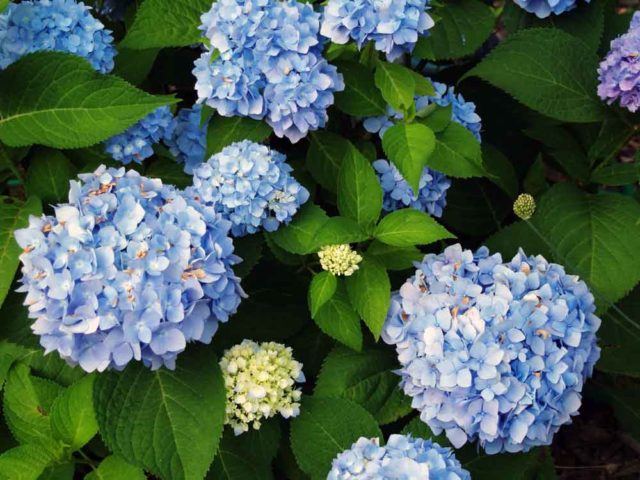

Ramars is a blue or purple blooming variety
Blue hydrangea in landscape design
Hydrangea is one of the most popular garden plants for its decorative properties. With the help of shrubs, they decorate lawns, create group and single compositions, plant a plant as a hedge.
It can be planted near the gate to the site, next to the gazebo in the garden or near the entrance to the house. The shrub goes well with perennial ornamental grasses. If you make it the center of artistic composition, then such a flower bed is guaranteed to attract views.
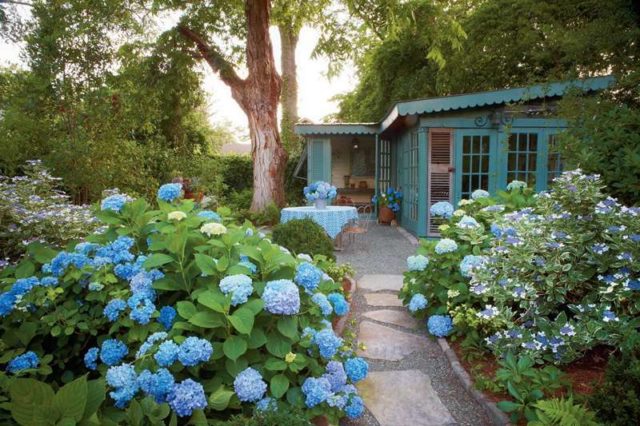

With the help of the plant, flower beds, hedges and artistic plantings are formed
Diseases
If you take care of the hydrangea incorrectly, this can provoke the appearance of diseases from which the buds and leaves suffer, which ultimately, if no measures are taken, leads to the death of the entire bush.
Gray rot
Young shoots are covered with brown spots. If the problem is not eliminated in time, flowers may also suffer, and then the whole plant will be covered with a gray bloom.
- remove damaged flowers;
- disinfect;
- process the bush with foundation or rovral;
- ensure proper watering and ventilation.
Powdery mildew Erysiphecommunis mushrooms
This disease is provoked by the fungi Erysiphecommunis. It affects the entire plant, preventing it from developing. Over time, the hydrangea withers and dies. As a treatment, you need to remove the affected branches and flowers and treat the bushes with fungicides.
Frost resistance of blue hydrangea
Large-leaved blue hydrangea tolerates winter cold well. Most varieties calmly perceive temperatures up to -30 ° C, the decorative effect of shrubs does not suffer from this. True, with late frosts in the spring, flowering may be disrupted if some of the plant's buds freeze.
You can grow blue hydrangea even in the Urals and Siberia, but you need to choose the most cold-resistant varieties. Increased resistance to cold is distinguished, for example, by the varieties Freedom and Ramars.
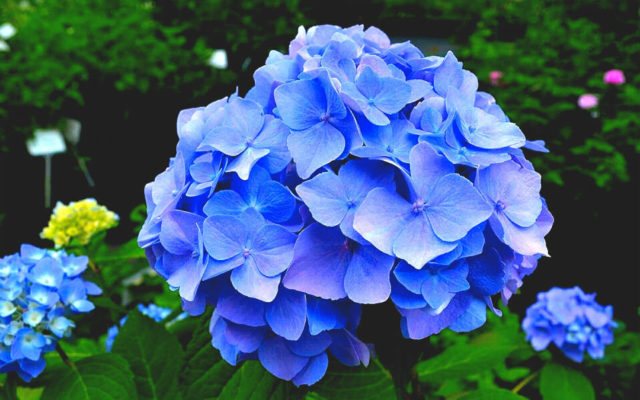

The plant tolerates winter colds well, in contrast to sharp autumn frosts.
Important! Despite the high frost resistance, the plant is still covered for the winter - they huddle in the near-trunk circle and, if possible, construct a cover for the aboveground part.
Planting and caring for blue hydrangea
The requirements for the care of blue hydrangea are low, a hardy plant can be successfully grown both in the middle lane and in more severe regions. But the gardener needs to know some of the nuances responsible for the decorativeness of the plant.
Selection and preparation of the landing site
Planting blue hydrangea is recommended in the spring, after the snow cover has melted and positive temperatures have been established. Usually, the shrub prefers well-lit places with a slight shade, and in dense shade, and in the sun it feels uncomfortable. The optimal location for him is a site not far from a wall or a high fence, since buildings can shade and at the same time protect from the wind
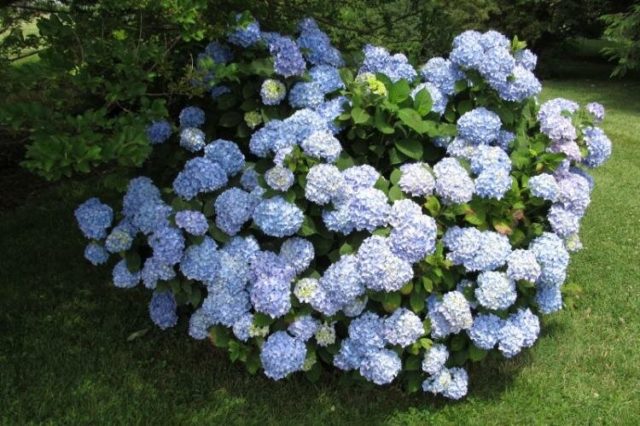

When preparing the site, it is important to qualitatively acidify the soil or lower the pH level to 6
When growing blue hydrangea, special attention must be paid to the composition of the soil. The shade of colors directly depends on this moment. In general, hydrangea prefers a nutritious soil consisting of fertile forest land, humus, peat and sand. However, the acidity level of the soil is of great importance, it should be between 5.5 and 6 pH.
Advice! To determine the acidity level of the soil, you can use a litmus test from a flower shop. The paper is dipped in soil diluted with water and removed after 10 seconds, and then the color is compared with the scale indicated on the package.
If the soil is not acidic enough, aluminum sulfate must be added to it.If the soil is too acidic, you can dilute it with dolomite flour to help achieve the optimum pH.
How to plant a blue hydrangea
Planting a blue garden hydrangea is carried out in almost the same way as planting an ordinary large-leaved hydrangea bush:
- A few days before planting, the plants dig a hole in the selected area, about 60 cm deep and 50 cm wide.
- Half of the prepared soil is poured into it, consisting of forest land, peat and compost, sand is also added to the mixture, it will provide drainage and increase the looseness of the soil.
- Complex fertilizers are introduced into the hole, which will contribute to the rapid development of the bush; if necessary, aluminum sulfate or dolomite flour is also added to acidify or alkalize the soil, respectively.


The plant needs frequent watering
After that, the blue hydrangea seedling is lowered into the hole and the root system is straightened, and then the hole is covered with earth to the end. The root collar of the plant should not be buried, otherwise the shrub will grow poorly. The earth is lightly tamped so that it does not sink, and 2-3 buckets of water are poured under the bush. After that, the trunk circle is mulched with peat or wood chips to retain moisture.
Watering and feeding
Blue hydrangea grows quickly and loves moisture very much. Therefore, you need to water the shrub twice or three times a week if the weather is dry, and once a week if the summer is rainy. 3 buckets of water are poured under the bush, while the liquid should be warm, since cold water negatively affects the health of blue hydrangea.
It is necessary to feed the shrub three times during the growing season:
- The first feeding is carried out in May, with the next watering, granules of urea, superphosphate and potassium sulphide are dissolved in water.
- During the budding period, hydrangeas are fed with superphosphate and sulfuric potassium, also together with watering, so that nutrients are absorbed by the plant faster.
- At the end of summer, the shrub is fertilized with organic matter, for example, compost or rotted manure.
Important! Blue hydrangea cannot be fertilized with wood ash, this useful additive contains alkali, and an acidic soil is needed for the blue tint of flowers. Ash can only be added to the soil if the acidity level of the soil is excessively high and needs to be lowered.
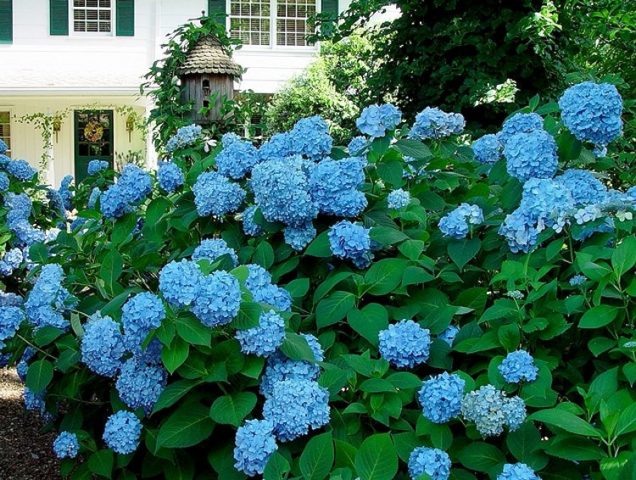

It is not recommended to feed the ash plant, it lowers the acidity of the soil
Pruning
Without regular trimming, blue hydrangea bushes can grow very quickly and lose their decorative effect. In addition, with an excess of green mass, flowering will worsen, the plant will not have enough strength to form blue inflorescences.
You need to prune the plant in the spring, and the procedure looks like this:
- all old shoots that have lost their decorative effect are removed from the shrub;
- cut off young shoots that violate the harmony of the bush;
- shorten annual branches, but do not cut them off entirely, so as not to damage the flowering;
- cut off the top of the bush and remove the remnants of dried flowers.
Timely pruning helps protect the blue hydrangea from pests and diseases and boosts its immunity. In addition, after shearing, the plant starts up actively and forms young shoots that take part in flowering.
How to cover a blue hydrangea for the winter
Blue hydrangea varieties are predominantly large-leaved and tolerate winter cold well, but react poorly to the first autumn frosts. Therefore, it is necessary to cover the blue hydrangea, especially the young one, in advance, while the temperature is still holding at 6-8 ° C.
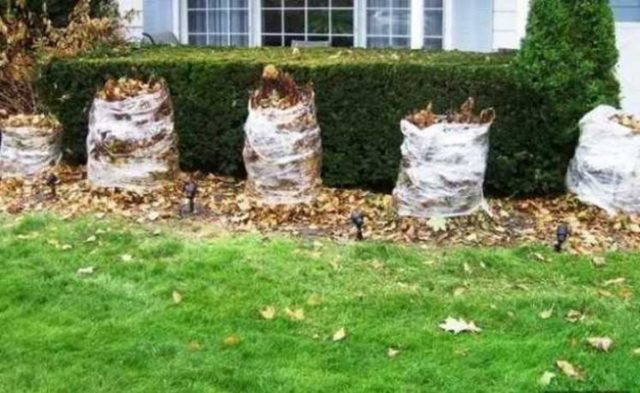

For the winter, you can build a frame shelter for a plant
Before wintering, the remaining foliage is removed from the hydrangea bush, leaving only the upper leaves located next to the buds to protect the buds from frost.After that, the near-trunk circle is carefully mulched with a dense layer of needles, peat or compost, and the shrub itself is covered with agrofibre and covered with spruce branches.
An interesting option is the construction of a special frame around the plant bush for the winter. In this case, the hydrangea is covered with insulating material, then a high frame is installed around it, for example, a wooden box or a metal mesh. Fallen dry foliage is poured inside the frame, and the blue hydrangea is reliably protected from the cold.
Fertilizing for color change
An important factor for the harmonious development and color change of the crop in question is the receipt of fertilizers. To do this, every 14 days, fertilizing is made from 20 g of aluminum-potassium alum, diluted in 20 liters of water. This fertilizer is sufficient for one adult plant.
Also, every month it is necessary to feed the plant with potassium sulfate (30 g of substance per 20 l of water). A solution prepared in this amount is sufficient for one adult shrub.
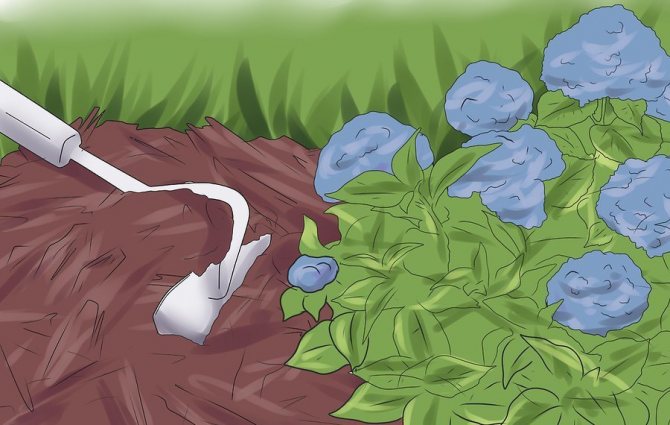

To maintain the optimum acidity of the soil and aluminum, it is necessary to carry out the mulching process every 1–1.5 months, which not only nourishes the soil with useful substances, but also relieves the gardener of the need to remove weeds near the trunk. Pine needles, sour peat, compost mixed with soil are taken as material.
In the near-stem circle, you can sprinkle 40 g of ground coffee or 20 g of aluminum sulfate per plant, then pour 10 liters of water on it.
Hydrangea is an amazing plant that can change the color of inflorescences. In order for the bush to bloom in a blue tint, and you can enjoy it, it is important to strictly adhere to the above rules.
How to propagate blue hydrangea
There are several ways to increase the population of blue hydrangea in the garden:
- by cuttings - young lateral shoots are cut at the beginning of summer, rooted in water or in a sandy-peat mixture, grown in the house during the season, and transplanted into the ground the next year;
- by dividing the bush - an adult hydrangea over 4 years old is carefully dug out of the ground and its rhizome is divided into parts with a sharp shovel, after which the cuttings are planted in the prepared areas;
- layering - in late spring or early summer, you need to bend a strong lower shoot of the bush to the ground, slightly bury it in the ground in the middle part and fix it, and the next year separate it from the mother bush.


The shrub reproduces well by dividing the rhizome, cuttings and layering
Seed propagation of a shrub is rarely practiced, since it is much more difficult to grow a hydrangea from a seed than in a vegetative way. But if you want to carry out just seed reproduction, then the planting material must be purchased in the store, seeds from garden bushes do not allow you to get a plant with varietal characteristics.
Soil preparation
Planting blue hydrangeas is carried out in prepared soil. You need to know what kind of soil is on the site. You can take a sample of the earth to a special laboratory. This will allow you to properly grow almost any ornamental plants.


The main rule when growing hydrangea is to properly moisturize it. The soil should be moist but well-drained. Moisture stagnation is also unacceptable. It is best that the soil contains 2 parts of humus, 2 parts of leafy soil. You should also add one part of peat crumb and one part of river sand to the mixture.
If there is too much lime in the ground, the hydrangea will not grow here. The pH level considered ideal for this plant is 5.0. If an overabundance or deficiency of an element is determined in the soil, the appearance of the hydrangea will change.

